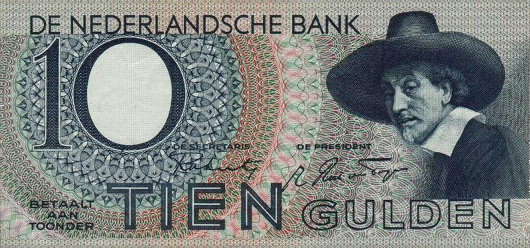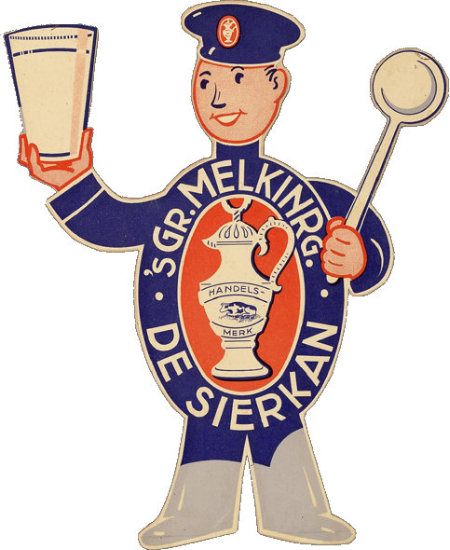Netherlands
About Andrew Cusack
 Writer, web designer, etc.; born in New York; educated in Argentina, Scotland, and South Africa; now based in London.
Writer, web designer, etc.; born in New York; educated in Argentina, Scotland, and South Africa; now based in London. read more
News
Blogs
Reviews & Periodicals
Arts & Design
World
France
Mitteleuropa
Knickerbockers
Argentina
The Levant
Africa
Cape of Good Hope
Netherlands
Scandinavia
Québec
India
Muscovy
Germany
Academica
A Forgotten Architectural Fantasist
Wilhelm Cornelis Bauer of the Netherlands
Boullée isn’t the only architect known more for the designs never built than for those that were. Wilhelm Cornelis Bauer (1862–1904) was a Dutch architect with a flair for the fantastic. He was born into an aesthetically minded environment in the Hague, where his father ran an interior decoration firm; his brother, the painter and engraver Marius Bauer, is better known. W.C. Bauer (sometimes known as Willem) studied at the Craft School before heading to the Royal Academy of Visual Arts and became involved in the circle of Dutch architects that included Berlage, Walenkamp, Kromhout and others.
Bauer had a very high opinion of himself, being convinced of his own genius, which often brought him into conflict with others, including potential patrons. The buildings of his that were constructed (such as a handful of houses in Bussum) were within the reasonable bounds of the Dutch contemporary vernacular, but Bauer was an inveterate dreamer with elaborate visions. Architectural competitions proved a perpetual draw, and while Bauer’s designs were often commended as highly artistic they usual brought simultaneous comments about impracticability. (more…)
The End of the Antilles
The Netherlands Antilles is Dissolved
THIS MORNING, one  country disappeared, two more were born, a fourth was expanded, and all are part of a single kingdom. The Netherlands Antilles, the collective islands of the Dutch West Indies which since 1954 has formed a constituent country of the Kingdom of the Netherlands, was dissolved. Two of the islands in the archipelago, Curaçao and Sint Maarten, have become full constituent countries of the Kingdom (alongside Aruba, which was separated from the Antilles in 1986, and the Netherlands proper), while the islands of Bonaire, Sint Eustatius, and Saba (the ‘B.E.S.’ islands) have been merged into the Netherlands proper as special municipalities.
country disappeared, two more were born, a fourth was expanded, and all are part of a single kingdom. The Netherlands Antilles, the collective islands of the Dutch West Indies which since 1954 has formed a constituent country of the Kingdom of the Netherlands, was dissolved. Two of the islands in the archipelago, Curaçao and Sint Maarten, have become full constituent countries of the Kingdom (alongside Aruba, which was separated from the Antilles in 1986, and the Netherlands proper), while the islands of Bonaire, Sint Eustatius, and Saba (the ‘B.E.S.’ islands) have been merged into the Netherlands proper as special municipalities.
The government of North Holland has invited the B.E.S. islands to join the province, but this has not yet been agreed to. With a combined population of just 17,000, Bonaire, Sint Eustatius, and Saba do not have enough inhabitants to justify forming a single province of their own — the province with the lowest population at the moment is Flevoland at 356,000. North Holland’s offer may be turned down if it entails the complication of the three island-municipalities becoming part of the European Union. Currently all the islands of the Netherlands Antilles are outside the E.U., but all their citizens are E.U. citizens by virtue of being Dutch citizens. (more…)
Mauritshuis Digs Deep
Art Gallery in the Heart of the Hague Unveils Expansion Plans
WELL, NOT THAT deep, really. The Mauritshuis museum in the Hague recently unveiled its plans to expand underground and across the street into a neighbouring building. The square-footage of the museum will double after the completion of the new project, which will include a new entrance, exhibition hall, café, and lecture theatre. The entrance to the museum, currently accessed from the side street, will return to the front of the Mauritshuis but underground rather than through the main doorway on the ground floor.
The building was originally constructed between 1636 and 1641 for Johan Maurits, Prince of Nassau-Siegen next to the Binnenhof palace. At the time, Prince Johan Maurits (a cousin of the stadtholder Frederik Henrik, Prince of Orange) was governor of the New Holland, the Dutch colony in Brazil. In 1820, the palace was purchased by the government to house the Royal Cabinet of Paintings. The Mauritshuis art museum was separated from the state by being transformed into a private foundation which enjoys the use of the building and the art collection on long-loan from the government. (more…)
Hup Holland Hup
Laat de leeuw niet in z’n hempie staan
Hup Holland Hup
Trek het beestje geen pantoffels aan
Hup Holland Hup
Laat je uit het veld niet slaan
Want een leeuw op voetbalschoenen,
kan de hele wereld aan
Want een leeuw op voetbalschoenen,
kan de hele wereld aan.
Don’t let the lion stand in his undershirt
Go Holland Go
Don’t make the beast wear his slippers
Go Holland Go
Don’t get played off the field
Because a lion wearing football shoes
Can take on the whole word.
Because a lion wearing football shoes
Can take on the whole word.
Holland in die Kaap
’n Groep van Nederlanders in die Kaap het hulle Volkswagen Beetle in die Hollandse patriotiese kleure geverf om hul steun in die Sokkerwêreldbeker te vertoon en hul het hierdie vrolike YouTube video gemaak ook. (Hulle blog, in Nederlands, is 34 graden Zuid).
Watter span steun ek? Ach, baie! Teen Engeland, het ek die Verenigde State gesteun (maar ek haat die “Anyone-But-England” houding van baie in die Britse Eilande buite Engeland). Teen Duitsland, het ek die Aussies gesteun. En natuurlik al die Maties moet BAFANA BAFANA steun!
So vir groepe A-H (onderskeidelik) ons is vir Suid-Afrika, Argentinië, die VSA (of Engeland), Australië, Nederland, Nieu-Seeland, niemand in groep G, en Chili.
Hollandic Heraldry
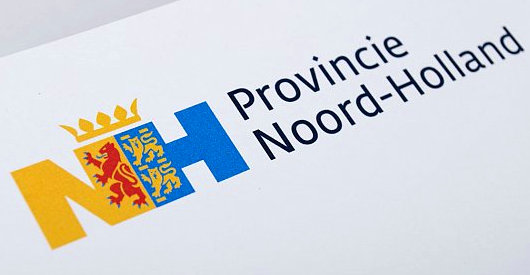
The Eden Spiekermann group, who were responsible for the redesign of The Economist in 2001, recently developed this logotype for the Dutch province of North Holland. The conjoined legs of the ‘N’ and ‘H’ integrate the province’s coat of arms.
Race Riots in South Africa’s Birthplace
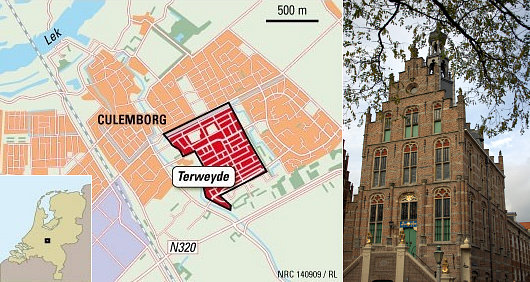
CULEMBORG in the Netherlands is the birthplace of Jan van Riebeeck, the Dutch East India Company bureaucrat who founded Cape Town, and thus in a sense the city is the birthplace of South Africa. That country’s had more than its fair share of racial tensions, but NRC Handelsblad reports that race riots recently erupted in Holland’s Culemborg. The rioting was not between Dutchmen and foreigners but rather between Moroccan and Moluccan youths in the district of Terweijde.
“It’s typical of ‘young male syndrome’ says a riot-expert with 25 years experience,” the article informs us. There’s rather something of Peter Simple in referring to a “riot expert with 25 years experience”. In NRC’s case, they are referring to behavioural scientist Otto Adang, but one could easily imagine Michael Wharton referring to a football hooligan or some other ne’er-do-well as “a riot expert with 25 years experience”.
No. 82, Eaton Square
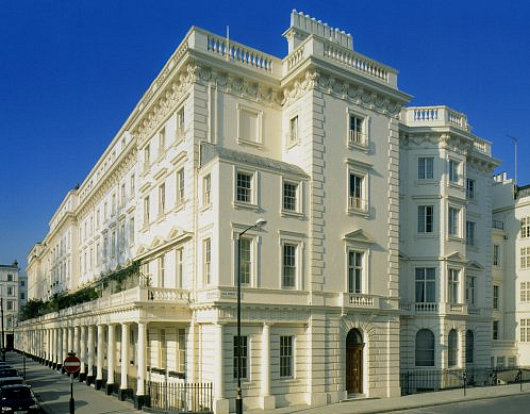
In it’s long history, the address of No. 82 Eaton Square in London has housed a Major-General of the East Indian Cavalry, a Lord Strafford, a Lord Bagot, an Earl of Dalhousie, an Earl of Clare, a Duke of Bedford, and Queen Wilhemina of the Netherlands — thankfully not all at once. It’s probably best know for its half-century as the Irish Club, a much-favoured drinking & smoking spot for the community of Gaels in London. The club was founded in 1947, with a number of pre-existing Irish clubs merging into it. George VI — grateful for the devoted service of the Irish who volunteered for his armed forces during the Second World War — heard that the club was in search of premises and asked the Duke of Westminster, one of the largest landowners in London, if he could help. The Duke provided the leasehold of No. 82 Eaton Square to the Irish Club for a nominal sum. (As it happens, the 4th Duke’s son served as a Unionist MP for Fermanagh & South Tyrone, and later in the Northern Irish Senate). (more…)
‘The Feast of St Nicholas’, Jan Steen
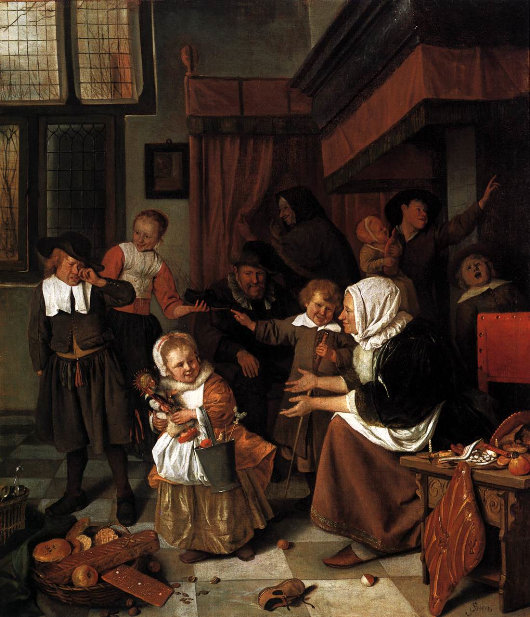
1665-68, Rijksmuseum
Notes of the Netherlandic Church II
Archbishop Eijk chooses tradition-friendly priest as his cathedral rector
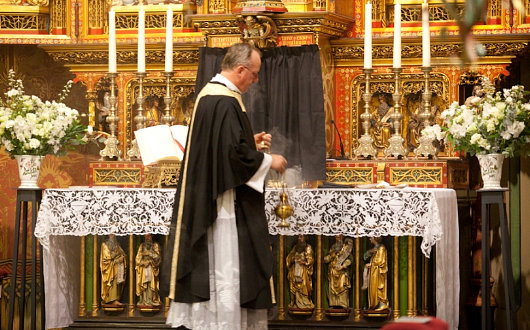
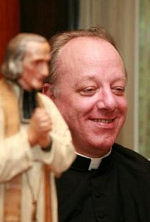
Fr. Harry Van der Vegt
The Archbishop of Utrecht & Primate of the Netherlands, Wim Eijk, has chosen a priest well-known for friendliness to traditional Catholics as the rector of his own cathedral. It was announced recently that Father Harry Van der Vegt is to be appointed rector of the Cathedral Church of St. Catherine in Utrecht, effective January 1, 2010. The priest will also be pastor of the Augustinuskerk and of St. Willibrord’s (which was the subject of the last Dutch church update).
Erik van Goor, of the Dutch periodical Bitterlemon, describes Fr. Van der Vegt as a “quiet but sturdy peasant’s son”. In the face of opposition from Modernist clergy and laity, Fr. Van der Vegt has been known to keep his cool, van Goor says. “Without making a political game of it, without showing any sign of reduced loyalty to the Church as it exists in the Netherlands, he remained quietly loyal to the tradition of the Church.”
“The appointment of Van der Vegt is actually a bit of a surprise”, notes one Dutch blogger, “because Archbishop Eijk is not really known as a major supporter of the old rite.” His Excellency was nonetheless responsible for normalizing the situation of the traditionalists of St. Willibrord’s Church in his diocese, mentioned previously.
Fr. Van der Vegt is currently serving the traditional faithful of Deventer in the province of Overijssel, and his new appointment will likely leave those people without a traditional mass for the time being. However, as Fr. Van der Vegt will be assuming control of St. Willibrord’s, the two FSSP priests currently there will probably be reassigned. The two currently travel all across the Low Countries, offering masses in Amsterdam, Bruges, Rotterdam, and elsewhere.
Parishioners at St. Willibrord’s, meanwhile, hope the new priest will say the extraordinary form at a more advantageous hour; it is currently said each Sunday at 5:30 in the evening.
Foundation ‘Ecclesia Dei’ Delft Releases 2009 Report
The Foundation ‘Ecclesia Dei’ Delft has released its latest report on the state of tradition in the Netherlandic church. ‘Ecclesia Dei’ is a group of Catholic faithful attached to the traditional liturgy as codified in the 1962 missal, and exists for the promotion of Catholic orthodoxy and specifically the liturgical tradition of the Church. In gauging the response to Benedict XVI’s motu proprio Summorum Pontificium, the report finds that “the Dutch Bishops Conference did not define a common policy concerning the implementation of the motu proprio.” The general attitude of the bishops is described as one of extreme passivity, “discouraging requests, ignoring the traditional liturgy, and keeping the faithful in ignorance of the motu proprio by a lack of information combined with disinformation about the traditional Latin liturgy.”
The report posits that bishops are primarily “afraid of the opposition by the modernist-infected priests and/or parish boards.” Many ordinary orthodox Catholics in the Netherlands are disillusioned with the strident Modernism that has infected much of the local church, and the bishops are said to fear “polemics” and “discord” even though, the report states, “they have not undertaken any measures to solve these problems for many years”.
On the teaching of the traditional liturgy in Dutch seminaries, the report confirms that instruction about the extraordinary form is almost nonexistent.
“However, since March 2009 and against the opposition of a number of priestly staff members at the seminary of St. Jan in ‘s-Hertogenbosch, a course about the theology of the traditional Latin liturgy has been given, but only because some of the seminarians claimed to have the right to it and showed a letter from the Pontifical Commission Ecclesia Dei.”
“As a result, 8 of the 12 seminarians now attend a private traditional Latin Mass three days a week at that seminary, despite the opposition.”
“In some diocese the situation has been improved in the first year of the motu proprio only by the initiatives of individual, relatively young priests.”
Some priests have attended German-organised training sessions, while others have received instruction from the FSSP priests in Amsterdam.
“Most of these priests are celebrating the traditional Latin liturgy in private and some even weekly in public now.”
As for the news of the specific dioceses of the Netherlands, much has already been written about the primatial see of Utrecht. In the Diocese of Haarlem-Amsterdam, Bishop Punt is prepared to grant FSSP a personal parish, from which the priests can work all over his diocese. Talks are ongoing. In other dioceses, however, foot-dragging, lip service, or ignorance of requests have been the norm.
Kiest Welter
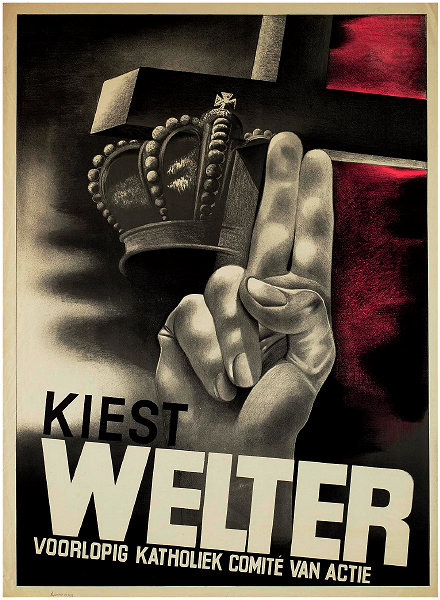
Christianity — Monarchy — Loyalty. This Dutch election poster urges voters to “Choose Welter”, referring to the sometime Dutch government minister Charles Welter. (more…)

Quiringh Gerritsz. van Brekelenkam, Family Group at Dinner Table
Oil on canvas, 22 5/8 x 28 3/8 in.
1658-1660, J. Paul Getty Trust
Note: Previously attributed to Cornelis de Man.
Joost Swarte
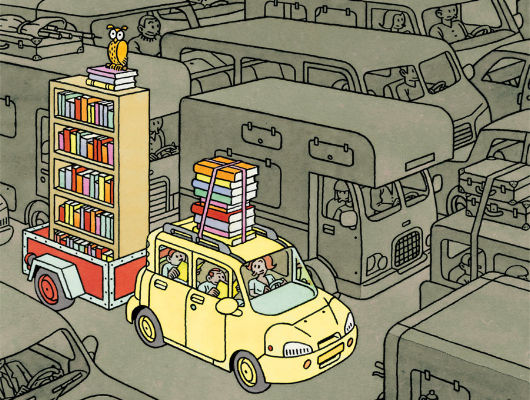
This year’s summer issue of The Walrus featured a cover from the cartoonist Joost Swarte, which occasioned a post about the Dutch ligne-clairist on the magazine’s blog. Mijnheer Swarte actually invented the term ligne-claire (or klare lijn) to describe the Tintin-esque school of bandes-dessinees, and has collaborated with the noted Peter van Dongen on the latter’s Rampokan series depicting the late years of the Dutch East Indies before it became Indonesia. Swarte’s work has also featured in The New Yorker, our “local” weekly which partly inspired the Canadian Walrus. Jumping from the printed page to brick and mortars, the new Musée Hergé in Louvain-le-Neuve was actually designed by Swarte. His previous architectural work includes a theatre building in his home town of Haarlem in North Holland. (more…)
Notes of the Netherlandic Church
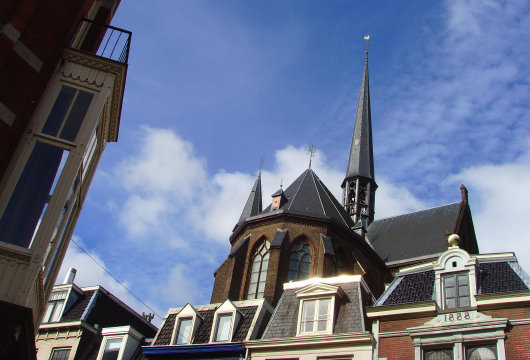
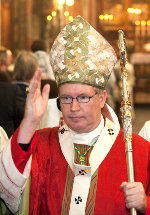
Willem Jacobus Eijk, Primate of the Netherlands
THE ANCIENT FORM of the Roman rite has returned to weekly use in Utrecht, the primatial see of the Netherlands. Under the guidance of Wim Eijk, Archbishop of Utrecht, the Church of St. Willibrord has introduced a weekly Tridentine liturgy each Sunday at 5:30 pm, to complement the 10:30 am Mass in Latin in the Ordinary Form. (Previously the old rite was offered only once monthly). The Extraordinary Form will be offered by Fr. A. Komorowski & Fr. M. Kromann Knudsen, both of the Priestly Fraternity of Saint Peter (FSSP, or Priesterbroederschap Sint Petrus in Dutch). St. Willibrord’s is a brilliant example of the nineteenth-century revival of gothic architecture, and the concurrent revival of Dutch Catholicism. Yet the parish was also emblematic of the Dutch church’s implosion in the 1960s & 70s. This beautiful, polychromatic monument to God was deconsecrated in 1967, and the diocese planned on demolishing the building. It was later sold, however, and occupied by an Assumptionist priest who continued saying the older form of mass. Joseph Luns, sometime NATO secretary-general and Dutch foreign minister, was a supporter of the apostolate at St. Willibrord’s.
The recently installed archbishop was keen to regularize the former parish’s situation, and erected it as a non-territorial parish under the auspices of the Vereniging voor Latijnse Liturgie (Association for Latin Liturgy) which promotes Latin in both the ordinary & extraordinary forms of the liturgy. The parish newsletter now proclaims that, at St. Willibrord’s, “all masses are once again celebrated ‘ad orientem'”, and both Sunday masses are accompanied by Gregorian chant. The church also revived, starting in 2002, the Procession of the Relics of St. Willibrord, which is held during the annual festival that opens the cultural season in Utrecht, in order to expose the tradition to a wider audience. (more…)
Oranje in New York
The Prince & Princess of Orange Celebrate 400 Years of the Hudson
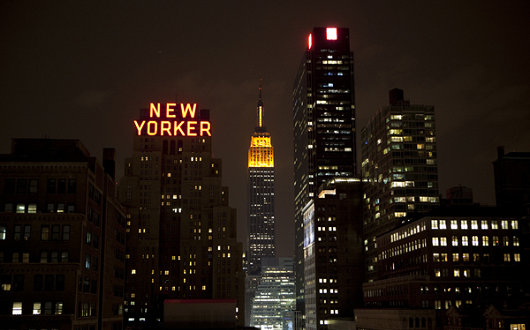
THE CONNECTIONS BETWEEN New York and the Netherlands go back far; back to the very beginning indeed, to 1609 when Henry Hudson, in the service of the Dutch, first set eyes on the greatest harbour of the Atlantic seaboard. The four-hundredth anniversary of that event brought the Prince and Princess of Orange, the heirs to the Dutch throne over to old New Amsterdam for the culmination of the year’s quadricentenary celebrations.
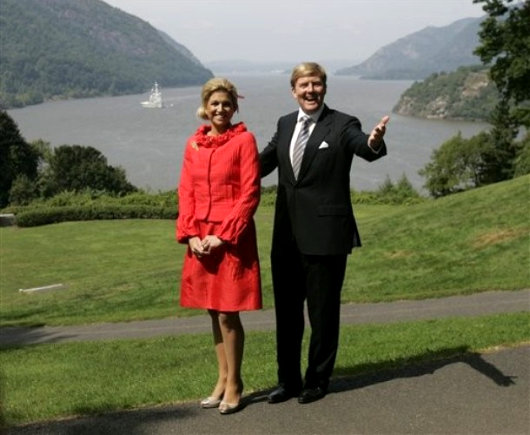
After their arrival in the Empire State, Prince Willem-Alexander and Princess Maxima sped straight up the Hudson Valley to West Point, the pearl of the river. The Kingdom of the Netherlands and the United States are official military allies, with at least 1,770 Dutch soldiers serving in Afghanistan, plus an undisclosed number of special forces from the Korps Commandotroepen. (more…)
Leve de Koningin!
“Hoera! Hoera! Hoera!” — The Third Tuesday in September Beholds the State Opening of the States-General of the Netherlands
Previously: Prinsjesdag
Sounds like America
I attended Orthodox Divine Liturgy yesterday at the Russian Orthodox Church of St. Nicholas, about a 20-minute walk from Central Station. The liturgy was mostly in Dutch. The church is a former Franciscan priory church. A parishioner, a Dutch convert, told me that in Holland you are either a Protestant Calvinist, a Catholic Calvinist, or an atheist Calvinist. He was pretty sure that most of the (tiny) Orthodox minority were Calvinists, too.
The Dutch Flags of New York
The vexillological inheritance from our Netherlandic motherland
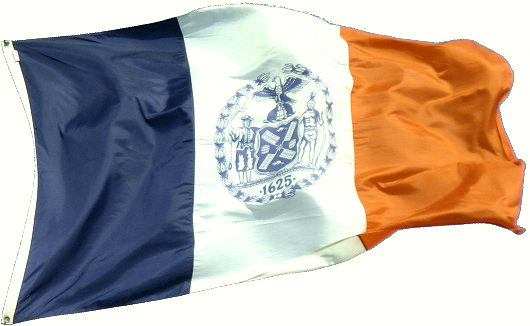
NEEDLESS TO SAY, New York owes a great deal to our Netherlandic founders, who imbued the city and land with much of its culture, eventually transformed (but not supplanted) by the overwhelming influence of the English who snuck a few warships into the harbour and knicked this land from the Hollanders. One of the many signs of New York’s Dutch history are the numerous flags which so obviously and proudly display this heritage. Here are just a few simple notes about a few of these flags.
Search
Instagram: @andcusack
Click here for my Instagram photos.Most Recent Posts
- Burns Tower April 19, 2024
- Patrick in Parliament March 18, 2024
- Articles of Note: 13 March 2024 March 13, 2024
- Cambridge March 9, 2024
- Taken on Trust March 4, 2024
Most Recent Comments
Book Wishlist
Monthly Archives
Categories

